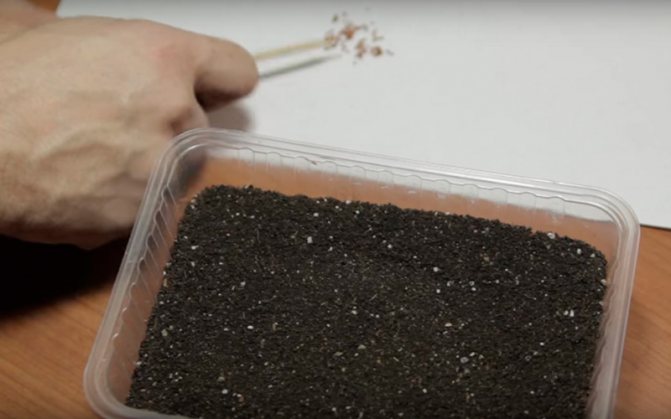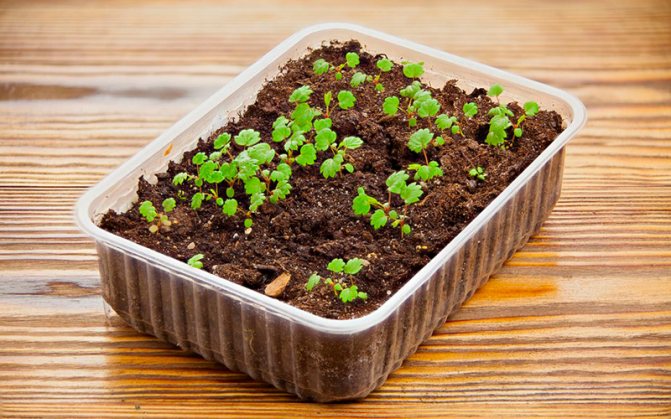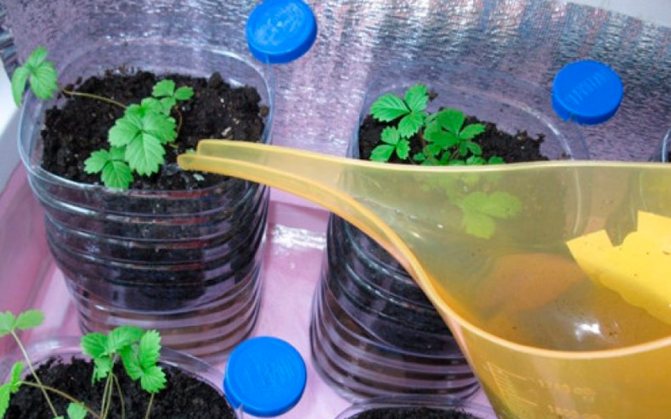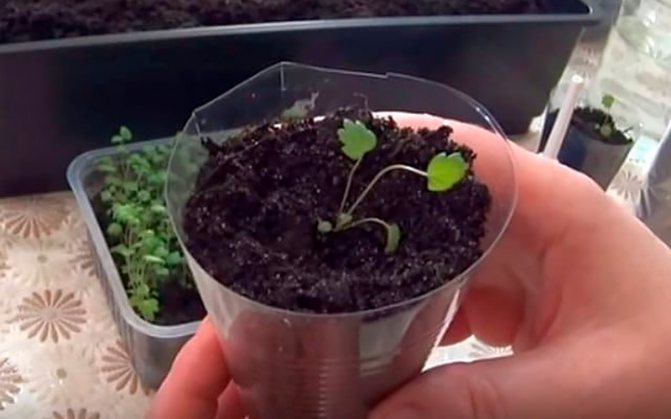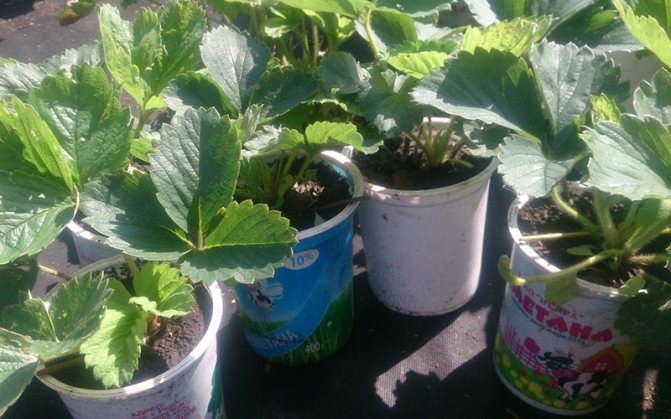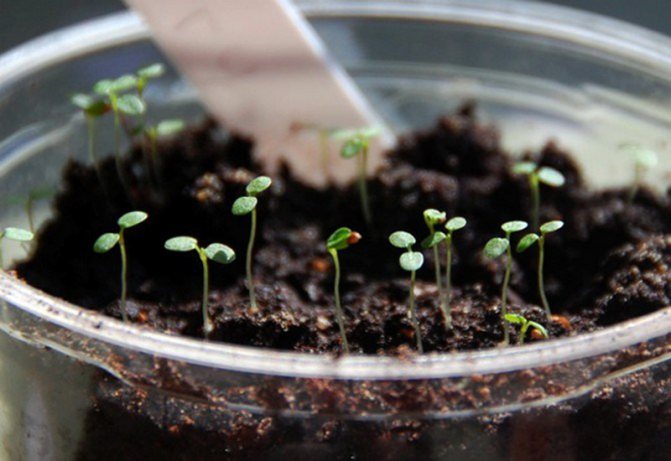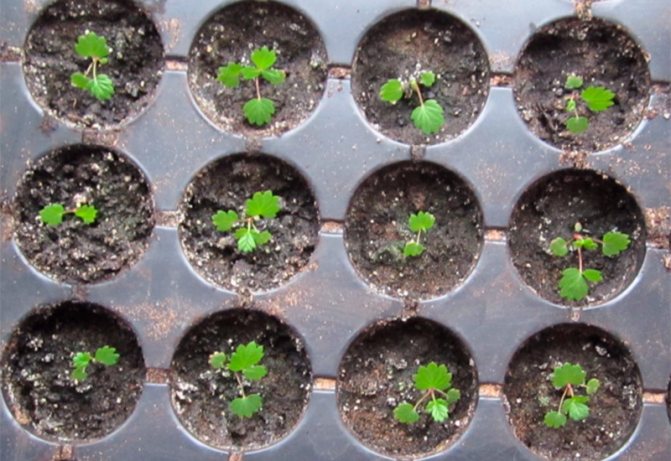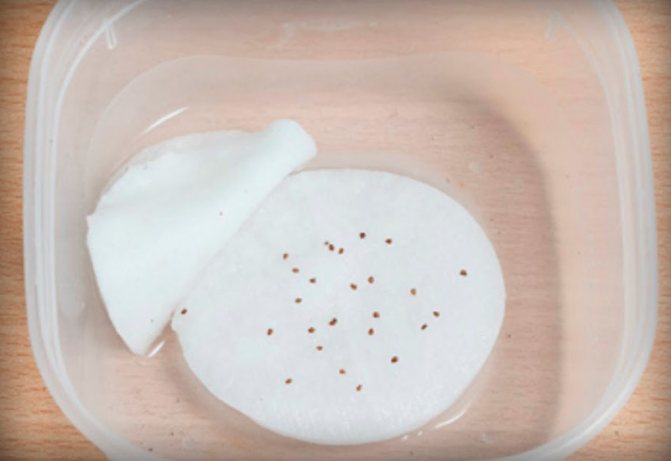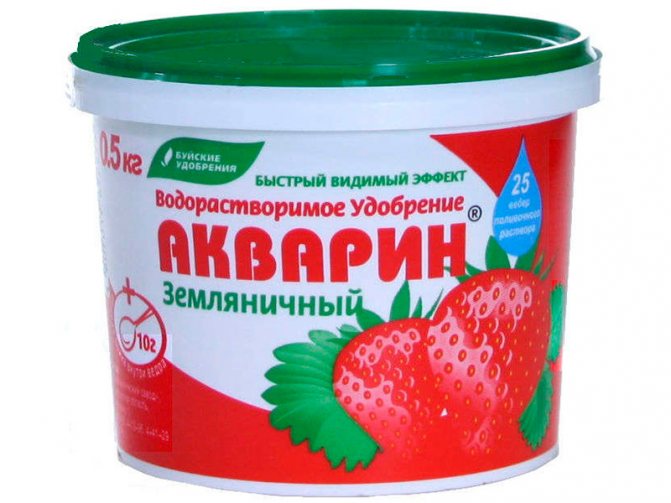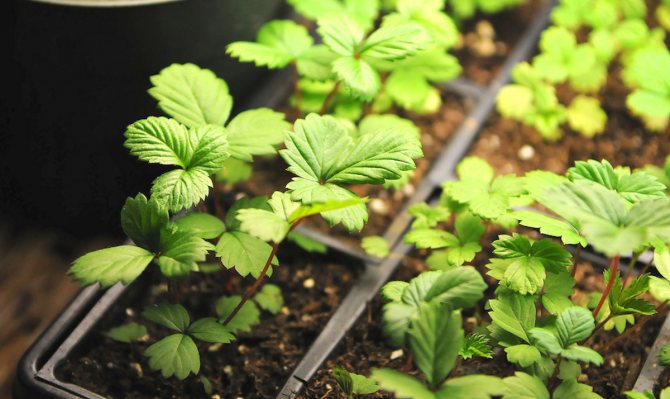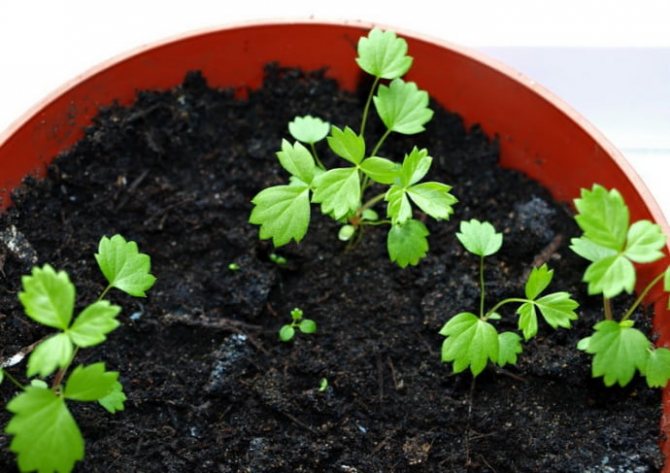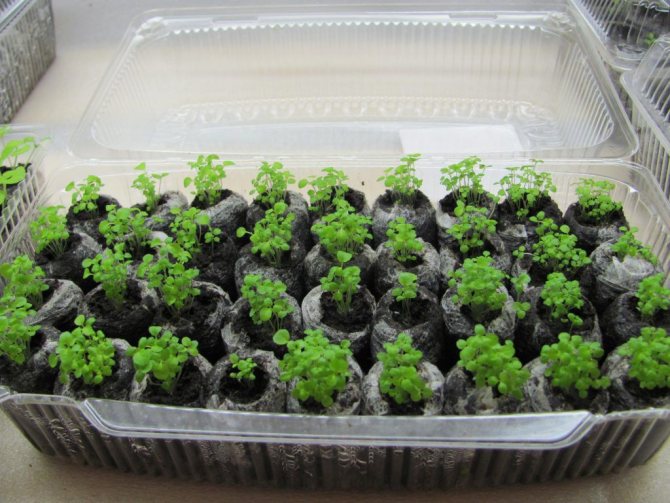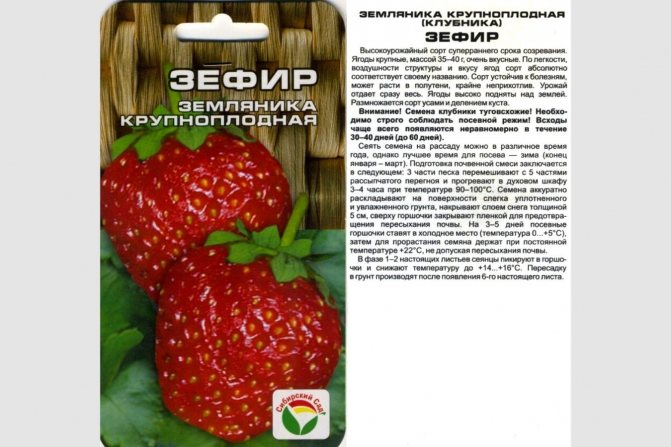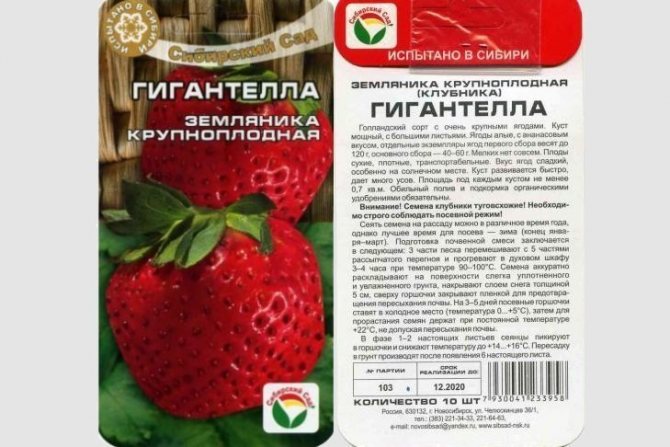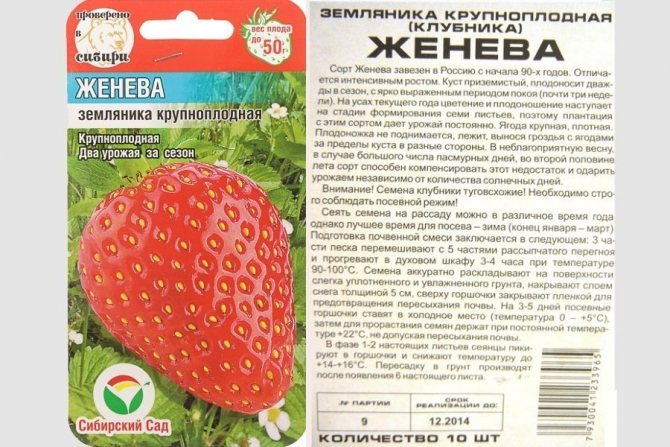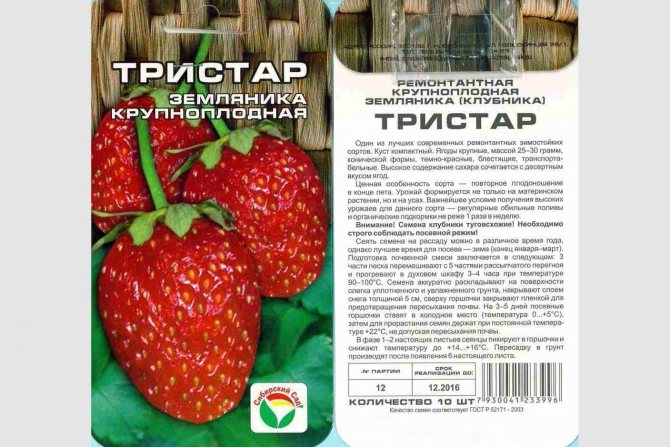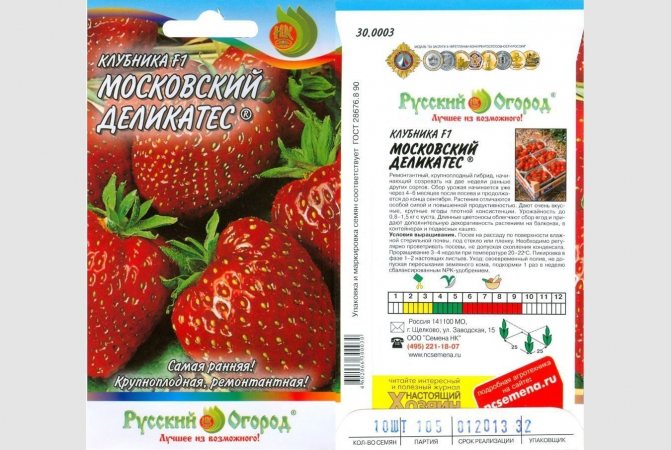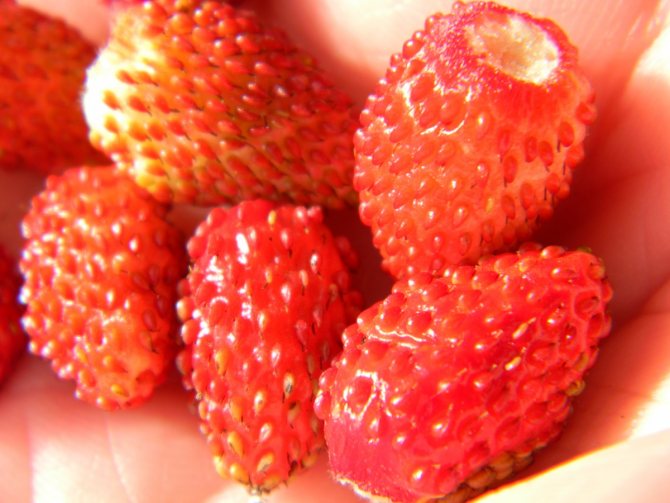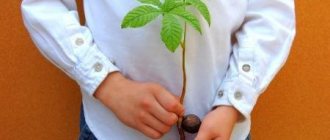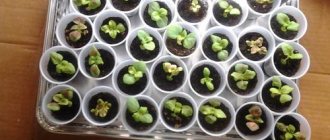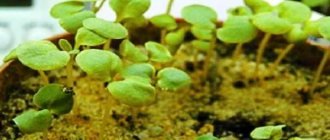Every year there are more and more people who want to taste their own grown vegetables and herbs in their home garden. Besides the usual tomatoes, cucumbers and a variety of greenery, you can grow strawberries all year round on the windowsill of the house. In winter, it is especially pleasant to enjoy homemade berries. The peculiarities of growing strawberries on the windowsill, how to choose suitable varieties, not to miscalculate with the timing of planting, correctly plant and grow a useful berry, skillfully cutting and feeding, will be discussed in this article.
Why grow strawberries from seeds
Strawberries are more often propagated using purchased seedlings or by rooting a mustache. But it happens that the purchased seedlings grows of a completely different variety.
More reliable grow strawberries from your own seeds
, since the seeds purchased from the seller do not always grow of the promised variety.
The seeds are harvested from well-developed bushes that yield a large harvest and are not damaged by anything. Seeds are harvested from ripe berries
, their middle part and base - there they are larger, they are distinguished by good germination.
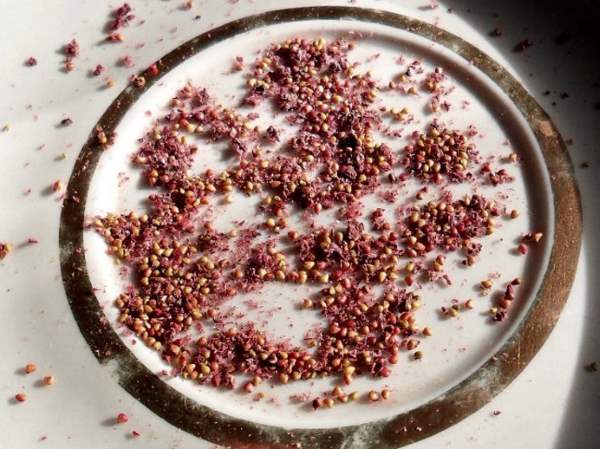
Seeds can be used to propagate any sort of strawberry, except for hybrids.
Preparing the seeds
Growing strawberries from seeds begins with buying seeds from specialized stores. There are a wide variety of strawberry varieties, it will not be difficult to find suitable seeds.
But you can get strawberry seeds without going to the shops, by yourself preparing the required amount of seeds (if there is already a strawberry bed in the garden). This is not as difficult as it might seem.
- Selecting a few of the largest berries. We extract the seeds located at the core of the berries, where the seeds are most developed (this will be visible visually), which will ensure full uniform germination.
- Pay attention to bushes too: do not take berries for seeds from damaged bushes. To extract the seeds correctly, use the unusual cutting method, leaving a thin layer of pulp around each grain.
- The cut seeds are laid out on paper and dried. When the pulp around the seeds is well dry, it is separated from the seeds by gently rubbing the seeds between your fingers. The prepared raw materials are stored in glass containers.
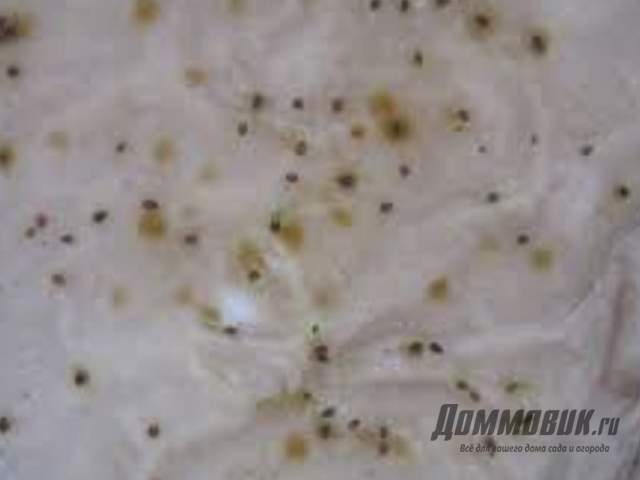

Seed preparation for sowing
Before sowing, place strawberry seeds in 0.5% solution of potassium permanganate
... After that, rinse the seeds well in clean water.
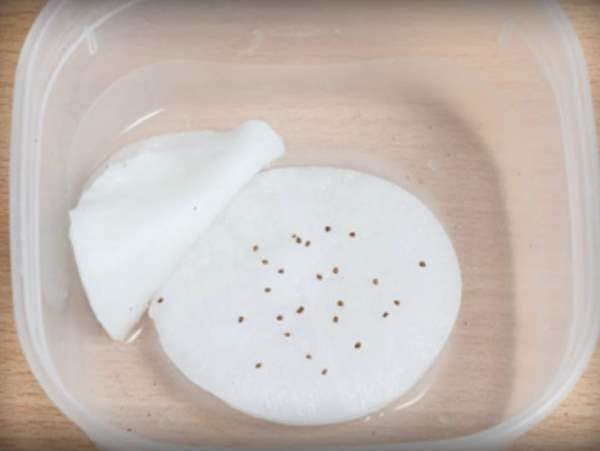

The next step will be stratification
- put the seeds on damp cotton pads or cloth. Put the different varieties separately. Put all the seeds in a container, close the lid and put in a dark place for 2 days.
Then send the seeds in the container to the lower shelf of the refrigerator for 2 weeks. Seeds should be regularly ventilated and sprayed with water.
Dry the seeds a little before sowing.
Back to the table of contents
Planting seeds
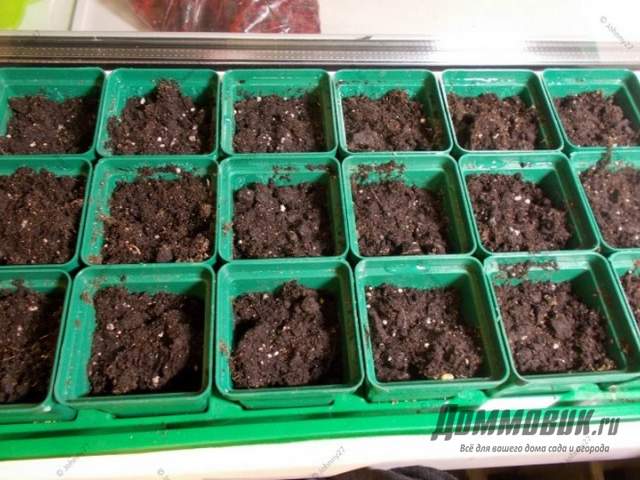

Seeds are planted for seedlings just before the onset of spring. The seedling containers are filled with prepared soil, tamped a little and sown seeds, sprinkling them on top with an additional layer of soil. The earth is moistened by spraying with a spray bottle. The containers are covered with cellophane to protect the top layer from drying out.
The next stage is hardening procedures that will "teach" strawberries not to be afraid of the cold. Containers with seedlings are placed in an unheated room for about 3 weeks.
Sowing strawberry seeds for seedlings
Finished seeds can be sown as in soil in a container
and in
peat cups
.
The soil for growing strawberry seedlings should be light, not oversaturated with fertilizers. For those who make soil with their own hands - 2 parts of sod land and 1 part of peat and sand.
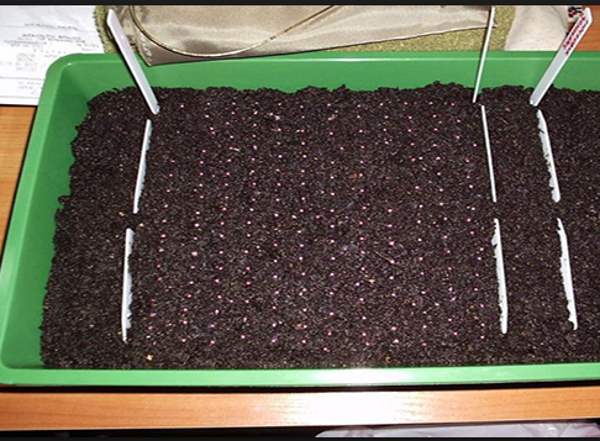

Mix all the ingredients and be sure to disinfect in the oven for 20-30 minutes at a temperature of 150 degrees.
Place the disinfected soil in a warm place for 2 weeks so that beneficial bacteria reappear in it.
Seedling soil
put in a container, compact and moisturize a little. Spread the seeds over the surface at intervals of 3-4 cm using a damp toothpick. Do not cover the seeds with earth, they germinate in the light.
We cover the container with a transparent lid (there should be small holes for air exchange) and put it in a warm, bright place (without sunlight).
Back to the table of contents
Which varieties are suitable for growing on a windowsill
It is necessary to choose planting material very carefully, since contrary to the common misconception greenhouse strawberry varieties are not suitable for growing in an apartment... The fact is that it is unlikely that you will be able to create "greenhouse" conditions, because in winter there is enough dry air due to central heating.
When choosing seedlings of indoor strawberries, it is recommended to pay attention not to the appearance of the plant, but to its characteristics.
Strawberry varieties, for growing at home on a windowsill, must be repaired, unpretentious to the length of daylight hours and temperature. The ampelous bushes that hang from hanging containers look especially beautiful in the apartment.
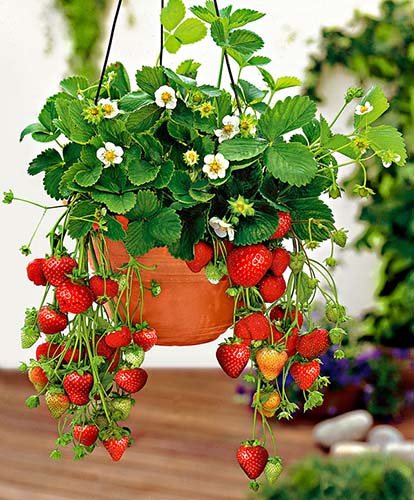

For year-round cultivation of strawberries on a windowsill at home, it is best to choose the following varieties:
- F1 homemade delicacy;
- Eternity S1;
- Temptation;
- Pink dream;
- Grandian F1;
- Elan F1.
It is also believed that varieties such as Albion, Aisha, Selva, Queen Elizabeth, Geneva, Russian Giant, Supreme and Tristan can be grown in the apartment.
Growing strawberries in peat tablets
Peat tablets already contain all the nutrients you need. The advantages of this growing method are that the seedlings do not need to be dived, the root system develops freely, the seedlings develop well.
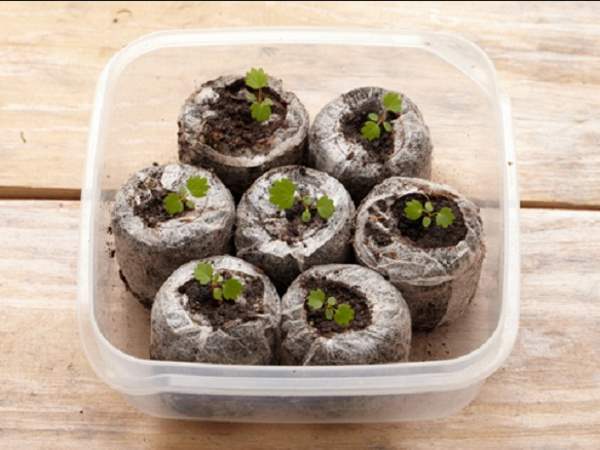

Place peat tablets in a container, fill with water to make them grow. Divide the prepared seeds into tablets with a toothpick. Cover the container with peat tablets with a transparent lid and place in a warm place.
Ventilate the crops regularly, remove the formed condensation from the lid so that mold does not develop. The lid is removed only after the first true leaves appear.
Video - Strawberries in peat tablets
Back to the table of contents
Advantages and disadvantages
How to decide on such troublesome cultivation of strawberries from seeds? Long germination, frequent death of seedlings from waterlogging or overdrying, their tiny size and fragility, which makes diving with tweezers a laborious process ... But it is the cultivation of strawberries from seeds that will help test and compare several new varieties. And the biggest advantage of this method is to independently control the entire process of growing strawberries: from seed preparation to harvesting.
For those who will master the cultivation of strawberries from seeds for the first time, we recommend starting with inexpensive small-fruited varieties (remontant strawberries), which are not as whimsical as similar strawberry varieties. These varieties give the most good strong seedlings and ... invaluable experience. In the future, it will be possible to start growing large-fruited varieties.
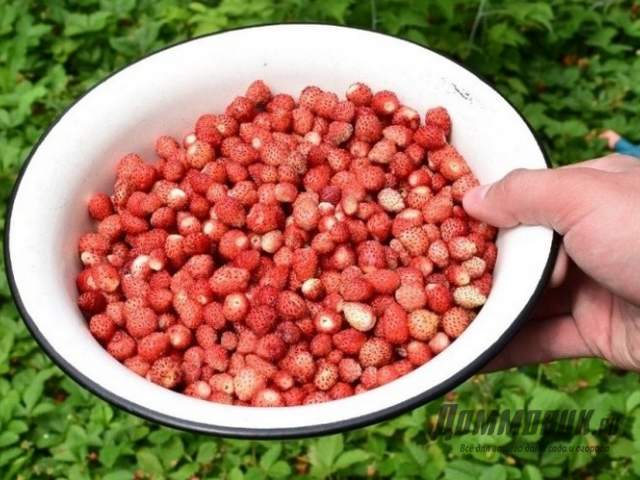

And finally, it is impossible not to say that strawberries are not just a delicious berry. It has high benefits, saturating with a rich complex of vitamins. It has long been known that strawberries can cheer up: a glass of berries - and stress is surprisingly dulled, the psychological state improves, despondency disappears, the problem no longer seems so big and insoluble. So all the effort spent will pay off a hundredfold - a treat that can make us at least a little happier!
Growing strawberry seedlings at home
Crops needed keep in a warm, bright place
, monitor the amount of moisture in the container, ventilate at least once a day. Seedlings appear in 2 weeks.
The first week, the seedlings need a temperature of 23-25 degrees, and after a week 15-18 so that the seedlings do not stretch out.
The cover or lid from the container is completely removed only after the formation of 2 true leaves, the temperature should be 18-20 degrees.
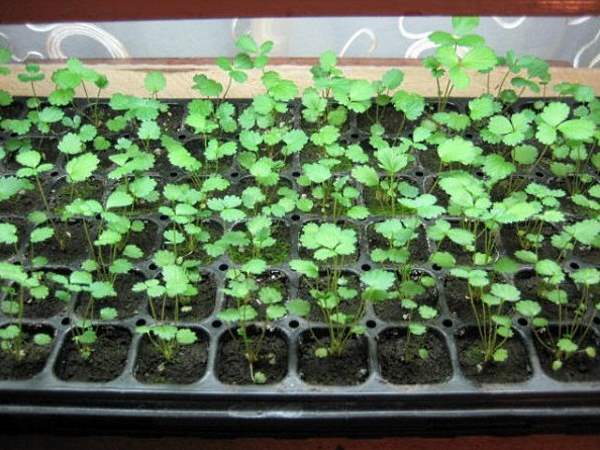

After removing the cover, the seedlings require even more light, additional lighting may be required. Seedlings should not fall into drafts; during this period of seedling growth, the temperature is reduced to 15 degrees.
Care of young shoots of strawberries
So how to properly care for seedlings? Firstly, after the first sprouts have appeared, the box with seedlings can be put on the windowsill without removing the package from it. Just a few minutes of bright sun can be fatal for them.
Secondly, it is important to choose the right place where the emerging seedlings will grow. Ideally, this should be a sunny windowsill, but you can try growing strawberries in a shaded area. As the experience of my acquaintances shows, this is quite possible. The bushes, of course, stretch out a little, but based on my own experience, I will tell you that there is nothing wrong with that, planted in the garden, they will let out new leaves from the middle (outlet), not elongated, stronger and stronger.
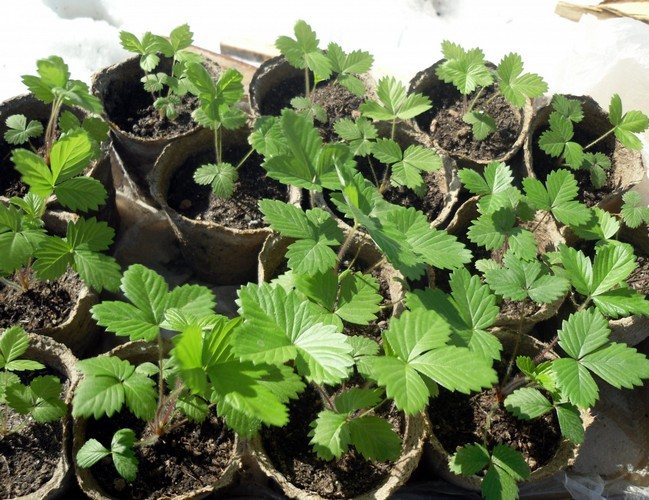

Watering strawberry seedlings
Use a medical syringe or pipette for watering
, water each plant under the root. The water should be separated, at room temperature. When watering, try not to get on the strawberry leaves - black spots may appear.
Watering is done early in the morning or after sunset. Strawberries are afraid of waterlogging and can be affected by a black leg - rot of the root collar of seedlings. This disease manifests itself at the stage from germination to the formation of 2 true leaves.
Diseases and pests
If you have dry air and high temperature indoors (on the windowsill), then strawberries are more likely to be attacked by spider mite... To get rid of this worst enemy, plantings can be sprayed with such folk remedies as garlic tincture. To prepare a solution, 2 cloves are crushed and filled with 100 ml of water. The mixture, infused for 2-3 hours, is filtered, poured into a spray bottle and the affected plants are treated. But it is much more efficient to use special insecticidal preparations (eg, Fitoverm, Bitoxibacillin - these are all biological agents, they are not phytotoxic and do not accumulate in plants and fruits).
Advice! And against powdery mildew summer residents also recommend using Fitosporin.
Highlighting strawberry seedlings
Seedlings in winter require additional lighting. For these purposes, use photo lamps or LED lamps, fluorescent lamps. Lighting should work for 13-14 hours, since even at 12 noon in February, the lighting is not as intense as in spring.
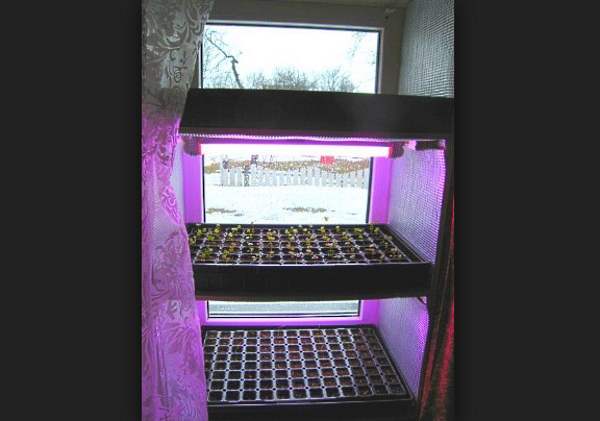

Install the lamp over the seedlings at a distance of 20 cm. It is also convenient to purchase a timer socket that will turn on the lights at 6 in the morning and turn off at 23 hours.
Back to the table of contents
Planting seedlings in open ground
Planting strawberries in open ground is accompanied by some preparatory measures. There is one rule among gardeners - the earlier the grown seedlings are planted, the better the plant will survive the winter season. Therefore, it is recommended to plant seedlings in the garden in August, the deadline is the beginning of September.
Weak sprouts may not be able to withstand freezing, so a transplant can be done closer to spring. Many are interested in when it is best to plant strawberry seedlings in open ground. To get a harvest throughout the summer, it is necessary to plant varieties, both with an early ripening period and late ripening. This can be done in summer and spring.
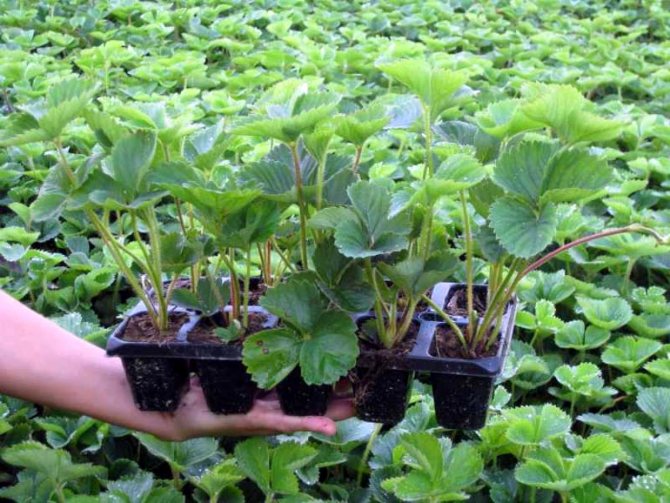

Picking strawberry seedlings
At the stage of development there are 3-4 true leaves. Before picking, the seedlings are watered, the plants are removed from the soil by the cotyledon leaves, in no case by the stem.
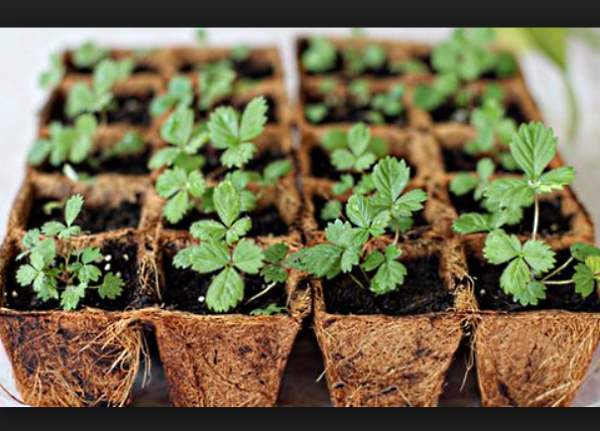

The central root is pinched and then the seedlings are transplanted into separate cups, and watered carefully. So they will grow until they are planted in the ground.
If your seedlings were planted in peat tablets, then after germination of the roots through the net, transplant them together with the tablet into separate cups.
Having made a pick in the future, it is necessary to make timely watering, loosening the soil and carrying out top dressing.
Preparing the soil
The quality of soil preparation affects the future growth dynamics of strawberries. Therefore, we prepare the soil in advance: turf (½ part), peat (1/4 part) and sand (1/4 part). For strawberries, this is the most ideal soil composition. You can add ash and manure to the soil. The manure can be replaced with suitable fertilizers.
Various pathogens (the presence of weeds and larvae) can be found in the soil, which will adversely affect the development of strawberry rhizomes. Experienced gardeners recommend steaming the soil before planting (for example, keeping the soil in a hot oven for 30 minutes). After the soil has cooled, they are engaged in planting seeds.
Feeding strawberry seedlings
Until the picking itself, strawberry seedlings do not need feeding. After the picking, after 2 weeks, fertilizers with a low nitrogen content, but with a high content of potassium and phosphorus, begin to be applied to the soil.
Feeding is carried out every 10-12 days. Strawberries respond better to liquid fertilizers.
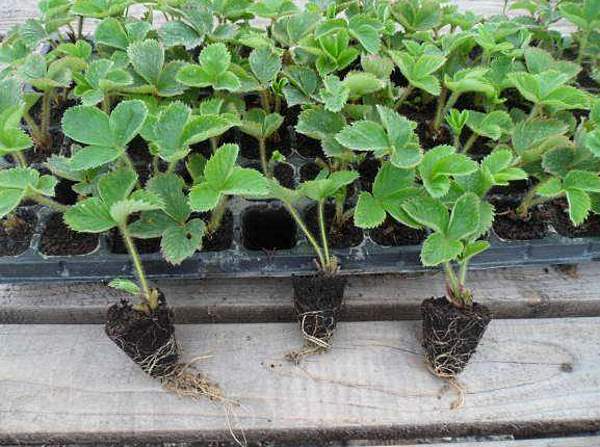

Video - Growing strawberries from seeds, diving seedlings
Back to the table of contents
Features of growing on a windowsill
Having decided to grow strawberries on a windowsill, first of all you need choose the right planting material... The fact is that it is better to grow indoors varieties that are unpretentious to environmental conditions.
In addition, in the room where the containers will be located, you need to create special microclimate. So that the strawberries do not hurt and grow quickly, it is required to install in the room comfortable temperature. It is equally important to control during the growing season lighting and humidity levels.
Sowing in a container
To grow strawberries on the balcony, you need to fill a suitable container with soil, level, slightly compact, moisten, make small grooves. Using a sharpened match, tweezers or a toothpick, it is necessary to spread the plant seeds at a distance of 2 cm from each other. They should be pressed a little against the substrate, but not covered with them from above.
For convenience, when planting planting material of different varieties in one container, you can attach the name of the variety in front of each groove.
After transferring the seeds to the ground, it must be moistened with a spray bottle, covered with plastic wrap or closed with a container lid. Make sure to make small holes on the surface of the container. It is advisable to place the container in a warm and lighted place, but not on the window sill itself - the grains will dry on it without having time to germinate.
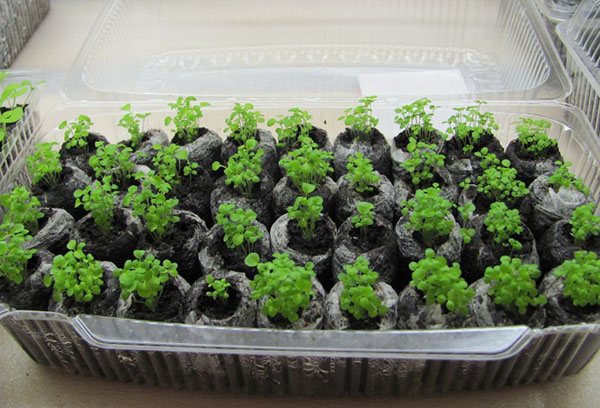

Care
In a few weeks we have received the first green shoots. But it is too early to jump for joy - this is only part of the work.Very delicate plants require careful maintenance. I moved them to a place where it is a little cooler and more light. A loggia or a glazed balcony is suitable for this.
Since the seedlings will live with you for some time, they are accustomed to the conditions of the house. The duration of daily ventilation is gradually increased. Do not rush and immediately remove the film. The sprouts may not like this impudence, and they will wither.
Advice! To speed up the adaptation, small holes are made in the film.
Shine
Then, when the seedlings are accustomed to the microclimate, they monitor their growth. If they sprout up densely, a few shoots are removed. In winter and March, seedlings need additional lighting. I took a regular fluorescent lamp, but both fluorescent and LED will work. They are raised 20 cm above the plant and turned on for 3 days.
When many sprouts appear, the lamp is left for 14 hours a day. In order not to run around the house with a clock, I advise you to purchase sockets with a timer. They will turn off the lamps themselves and save electricity.
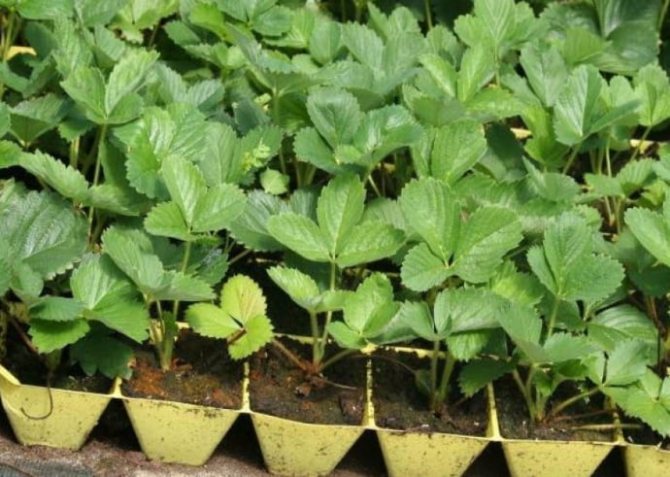

Preparing the pot, soil and planting material
Regular flower pots, planters, or oblong plastic containers work well for growing this sweet berry. In order to save money, buckets of mayonnaise can be used as a planting container, as well as plastic bottles with a volume of 5 liters, from which the upper part is preliminarily cut off. You can decorate these pots to your liking - paint, stick patterns of beads, shells and other materials suitable for decoration. The size of the container for planting can be different and depend, first of all, on the number of planting material. A suitable volume is 3-10 liters.
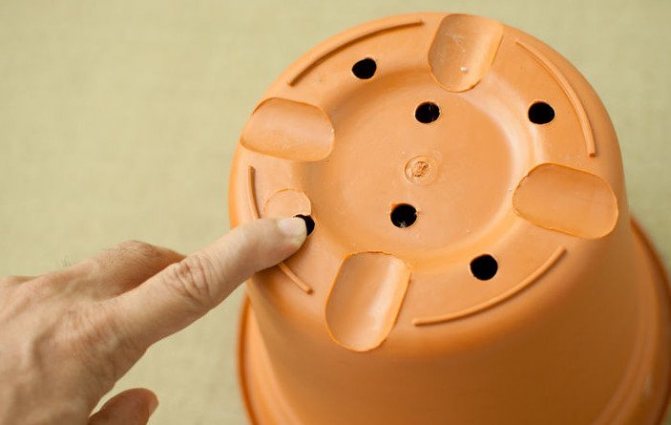

Containers for planting must necessarily have holes for draining excess liquid.
If they are not there, then the holes must be made yourself. The roots of the plant go 25–30 cm into the depth of the soil. Therefore, the containers for planting should be slightly higher in height than the indicated dimensions. It is advisable to choose a pot in light colors, since a dark color attracts the rays of the sun, and the lower part may heat up unnecessarily.
Useful Tips


Even experienced summer residents are often lost when growing strawberry seedlings, crop seedlings are too vulnerable and tender. Several recommendations will help you avoid mistakes and quickly solve problems when leaving:
- do not use old seeds for planting;
- moisture deficiency leads to instant withering of seedlings and death, therefore it is very important to establish regular irrigation of plantings;
- to improve the growth of seedlings, stimulants are used (Epin, Zircon);
- from waterlogging, strawberry seedlings can die. An excess of moisture leads to infections (black leg), mold in the soil. At the first signs, watering is reduced, the soil is sprinkled with calcined river sand, a pink solution of potassium permanganate is used for irrigation;
- wilting and yellowing of seedlings is often associated with too bright sun rays. In the daytime, it is recommended to shade the seedlings slightly to avoid burns on the leaves;
- if the leaves began to turn yellow from an excess of moisture, watering is temporarily stopped;
- noticing the defeat of seedlings by pests (most often, it is a spider mite), the plants are treated with an acaricidal agent;
- it is better not to rush to harvest in the year of sowing seeds. A little trick: it is advisable to remove the flower stalks from the planted seedlings in the summer in order to allow the bushes to grow stronger. Next year, the plants will be thanked with juicy berries.
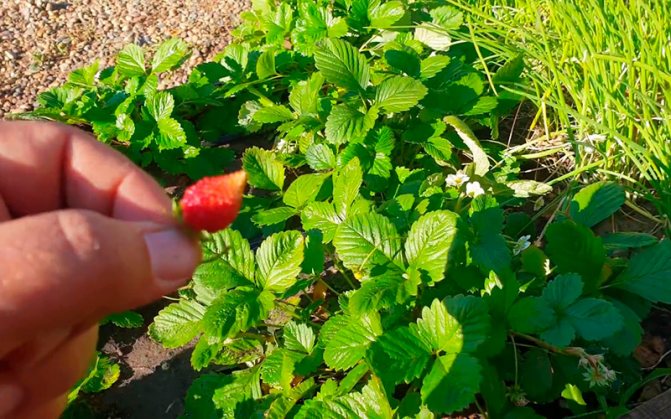

Growing strawberries from seeds is difficult, but the result is worth the effort. According to summer residents, it is from such seedlings that strong and abundantly fruiting plants are obtained, and harvesting in buckets will no longer seem fantastic.
Natalia Severova
Sowing dates
Sowing is necessary depending on the desired timing of the first harvest. If you plant strawberry seeds in February, then the bushes will bear fruit in the summer.When planting them in April, the bushes will only grow by autumn, but they will have time to get stronger and will delight with abundant fruiting next year.
In addition, the presence of additional illumination of the seedlings affects the time of planting the seeds of the plant. If the balcony is equipped with good lighting, then the sowing process can begin even in December. But in the absence of lamps, it is advisable to sow in March.
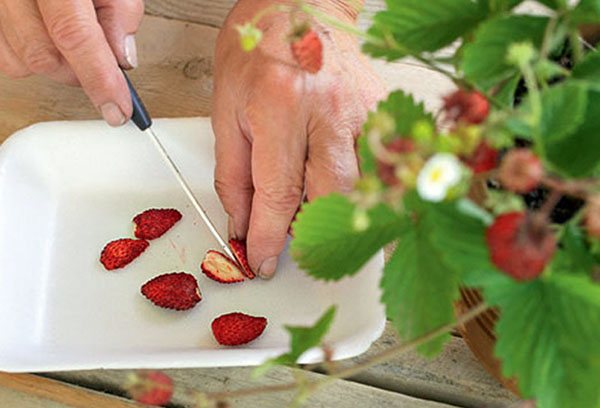

Collection and storage of seeds
The collection of seeds is limited in time, because it is possible only when the berry is fully physiological. The frequency of harvesting depends on the variety and the weather, but the harvest time must not be delayed. Strawberries are short-lived, and berries that have not been harvested from the garden for too long rot before seeds are obtained from them.
The collected berries are crushed, the pulp is placed on a very fine sieve and thoroughly washed under running water. The resulting seeds should be spread out in a thin layer and dried in a dry place in a warm room. Properly stored seeds remain viable for 3-4 years from the date of collection.
One strawberry can contain about 200 seeds per skin. Most of the seeds, about 400, have first-order berries, while second-order berries have about 250 seeds.
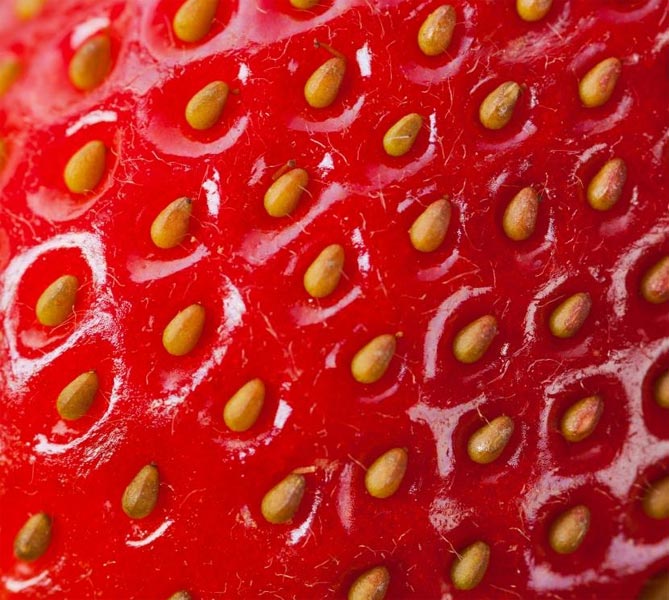

How to sow?
Seeds are selected and prepared, now let's learn how to sow strawberries in several ways.
Option 1: how to plant strawberries with seeds without stratification
After preparing the containers, it can be pots for temporary sowing or ordinary plastic trays and wooden boxes, fill them with soil, level them.
If sowing seeds in open ground, do the same.
Cut the grooves with a small board and fill them with seeds. Open the seed bags carefully. The strawberry seed is very small and easily lost. Lightly press down the surface of the soil with your hand so that the seeds come into contact with the ground better, but in no case do not sprinkle it on it, otherwise the sprouts may not appear.
This advice applies to all tiny seeds.
We cover the trays with plastic wrap. If sowing was carried out in open ground in hot weather, it is better to cover with agrofibre. For crops in trays and boxes, glass can be used as a cover. Every day we look at our plantings, air them and water them a little from a spray bottle.
Option 2: how to plant strawberries using snow for stratification
There is a method of sowing strawberry seeds in the snow. This will reduce the risk of seeds being buried in the soil. Snow is placed on top of the prepared soil, and seeds are placed on it and placed in the refrigerator (not in the freezer!). In the process of snow melting, the seeds fall tightly on the soil.
After 3 days, move the trays to a warm room. After that, don't touch them again. Cover the container with plastic or glass and place it on the window. Thus, you subjected the strawberry seeds to stratification - first cold, then heat cause the activation (awakening of the seeds) the germination processes.
Then, every day, slightly push back the glass for ventilation, a couple of minutes is enough, and moisten the soil with a spray bottle. Do not fill!
Lighting
In winter, there may be a lack of light on the windowsill. Strawberries and strawberries at this time require 16 hours of daylight. Supplemental illumination with phytolamps is recommended.
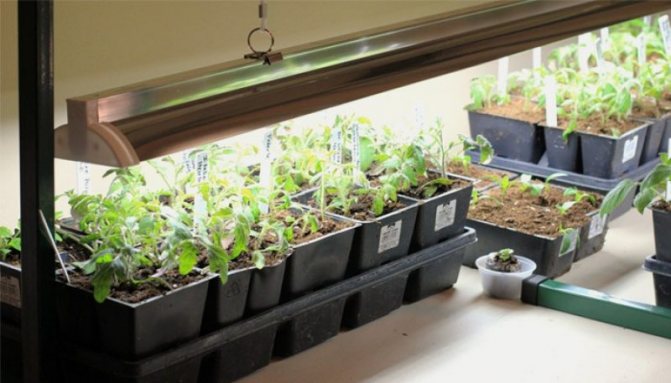

Artificial lighting of seedlings
back to menu ↑
See also: Strawberries: in the open field and in the greenhouse - we choose a suitable growing method for ourselves
Soil preparation
Strawberries can be attributed to unpretentious plants that are ready to yield crops even on not the most nutritious and "friendly" soil. But if you want to grow large and juicy berries, you need to take care of the good composition of the future potting mix. The finished soil must have the following characteristics:
- Low acidity values.If you want to use the soil from your garden, which is highly acidic, for planting strawberries for seedlings, prelimin it with fluff lime or dolomite flour;
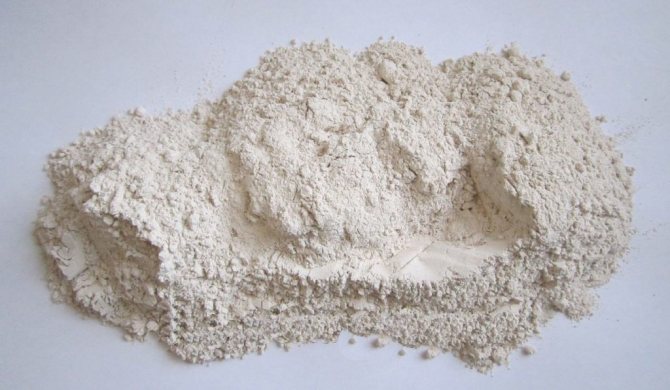

Fluff lime effectively lowers the pH of the soil - Air and water permeability. The better the soil permeates moisture and ventilates, the easier it is for the roots to receive nutrients and germinate;
- Absence of pathogenic bacteria. To prevent the seeds from becoming infected with fungus or other ailments immediately after sowing, disinfect the selected soil. We will return to the methods of soil disinfection a little later.
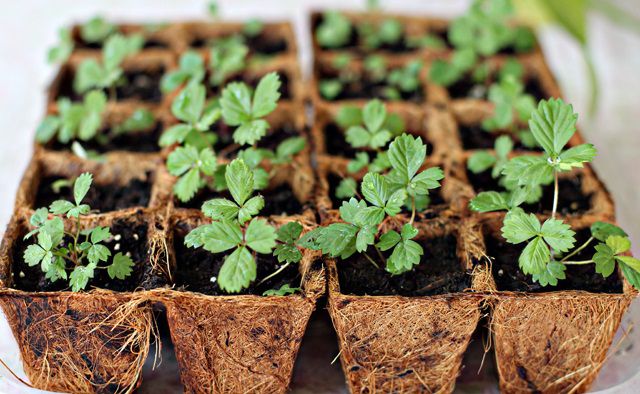

Sod land is included in the "recipe" for most mixes for strawberry seedlings.
In order to prepare a soil mixture for growing seedlings, you will need the following ingredients:
- Sod soil;
- Sawdust;
- Ground dolomite;
- Ash;
- Humus.
For ten liters of peat, there are three tablespoons of dolomite and one glass of ash. It is also allowed to add rotted manure. All the components described are thoroughly mixed until a homogeneous mass is obtained.
Disinfection
One of the easiest ways to disinfect soil is by steaming. To steam the soil, take a large saucepan, fill it a quarter with water and put it on fire. Place a colander filled with soil on top and cover the pot with a lid. As soon as the water begins to boil, hot steam will appear, which will rid the earth of any pathogenic bacteria, algae and fungal spores. The duration of the procedure is one hour.
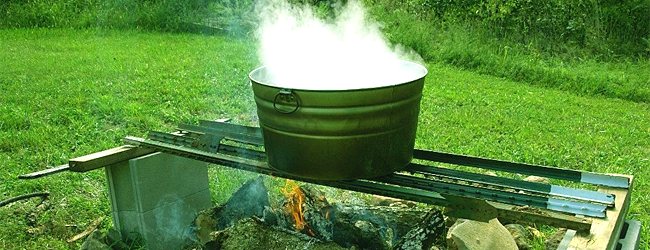

Soil steaming can be carried out in the open air as well.
You can also warm up the earth in the oven and in the microwave, but the last two options roughly affect the soil and destroy not only harmful, but also beneficial bacteria. Steaming is considered one of the most gentle disinfection methods.
The main problems with growing
In spring, wrinkled and deformed leaves can be seen on strawberries - these are signs of a tick attack, which wakes up in April. It is impossible to notice the insect itself with the naked eye. Affected strawberry bushes should be treated with Fitoverm, Aktellik or other acaricide.
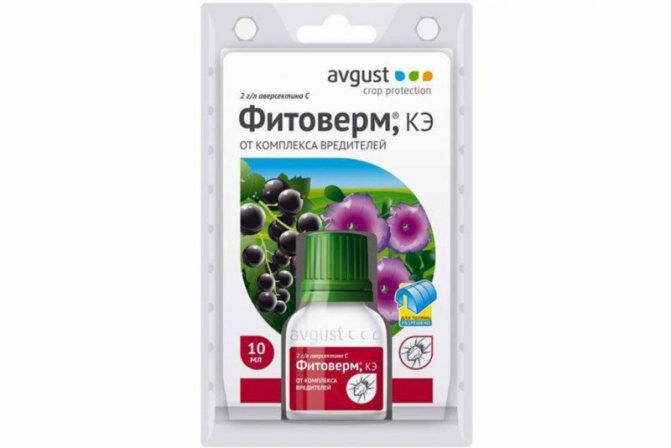

Remontant strawberries require special care. Top dressing should be applied regularly, weeded, loosened the ground, water it in time and remove excess mustache. It is advisable to make a raised bed - it will be warmer than the main ground level on cold autumn days, when the strawberries are still bearing fruit.
Planting seedlings
How to plant strawberries with seeds is described above, and the process of planting seedlings in a garden has its own characteristics:
- seedlings should be strong, not damaged;
- the sprouts should have roots up to 5 cm and several leaves;
- sprouts should not be affected by pests, such seedlings do not guarantee survival;
- landing is best done in cloudy weather;
- seedling pits should be up to 12 cm deep;
- distance between rows - up to 70 cm, between bushes - up to 25 cm.
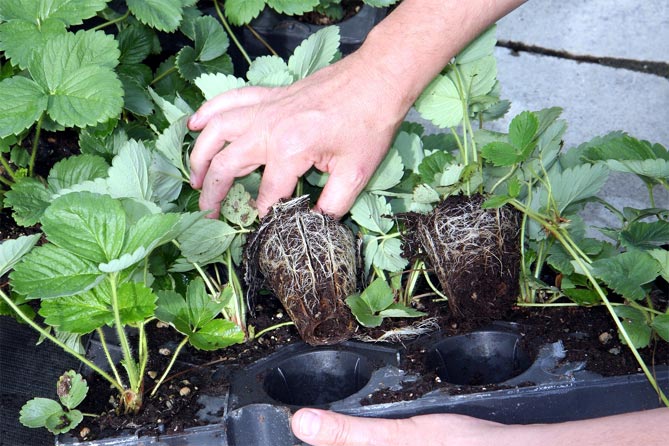

The quality of the future harvest directly depends on the purchased seeds. In Moscow and the Moscow region, you can buy seeds from trusted summer residents, and in the future, choose several strawberries and select seeds from them.
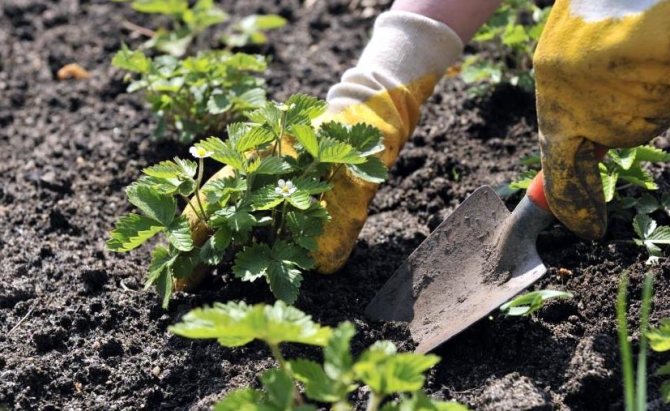

Planted plants need good lighting and good ventilation of the bushes. It is not worth deepening the seedlings much - this will lead to falling asleep of the growing point after exposure to moisture.
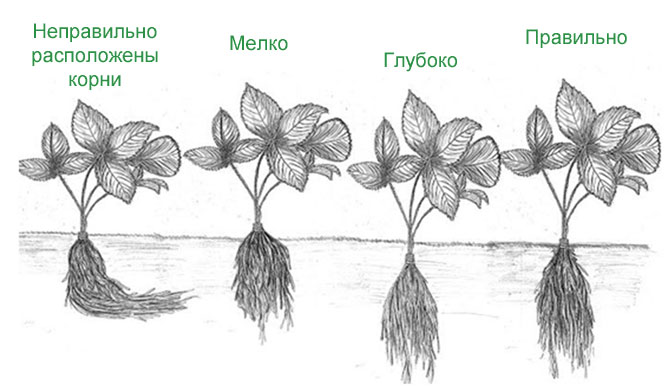

Planting garden strawberries
Strawberries ready for transplanting to a permanent place should have 4-6 true leaves, strong shoots, well-developed roots. The timing is determined taking into account the climate of the region, the weather of the current season, the onset of stable heat.
On a note! The soil should warm up to + 14ºC… + 16ºC.
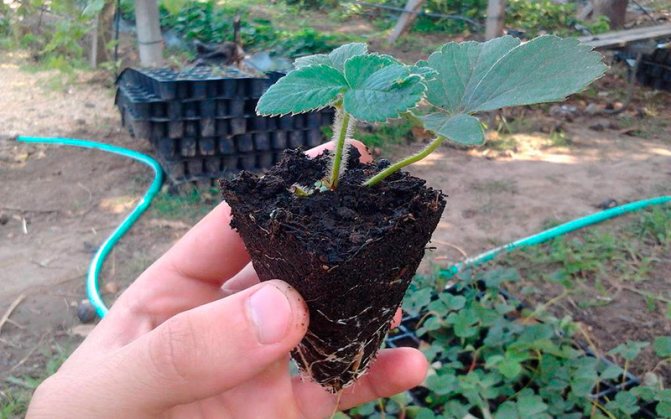

In the middle lane, the appropriate time for disembarkation is mid-May, in the northern regions - from early to mid-June.At first, the seedlings are shaded from the sun's rays, covering with non-woven material. He will save in the event of recurrent frosts.
Buy strawberry seedlings - is it worth it?
The seed method is mainly used to grow seedlings of remontant strawberries, as well as hybrid varieties that do not form whiskers. Seeds of hybrid or remontant varieties harvested with their own hands are not suitable for propagation, because seedlings grown from them rarely retain the characteristics of the variety. It is in such cases that you have to acquire strawberry seedlings.
Where to buy strawberry seedlings? When buying seedlings on the market, you will not receive any guarantees, except for the assurances of the seller, therefore it is better to purchase seedlings in nurseries, in garden pavilions or at fairs where the seedlings are taken out by producers. Since garden strawberries are susceptible to disease and pests, it is very important to be able to choose healthy and high-quality seedlings.
How to determine the quality of seedlings? Pay attention to these signs:
- if the seedlings have dots on the leaves, this may be a symptom of fungal spots;
- seedlings with faded leaves should alert you, since pallor can be a sign of incurable fusarium necrosis of the horns;
- wrinkling of young leaves may mean that the seedlings are affected by strawberry mites, and it is better not to buy such seedlings;
- healthy seedlings should have shiny, pubescent or leathery leaves with a juicy green color;
- the length of the roots of seedlings with an open root system must be at least 7 cm, and the thickness of the horns must be at least 7 mm;
- if the seedlings are sold in pots, make sure the roots have taken up the full capacity of the pot.
Fertilization
- The introduction of dressings will intensify the physiological processes in the body.
- You should apply universal and complex fertilizers for indoor plants once a month.
Don't overdo it with nitrogen fertilizers. Otherwise, you will end up with an abundant green mass without fruit.
- In order to increase the amount of ovary in the soil, there must be enough iron.
Stick a rusty iron object into the plant pot. This is an old proven way. For a greater effect, it is recommended to apply special fertilizers, which include iron.
back to menu ↑
See also: Gerberas: how to grow a tropical flower at home. Description, varieties, care, reproduction, possible diseases (50+ Photos & Videos) + Reviews
Landing in a permanent place
At the age of two to three months, strawberry seedlings can be transplanted to a permanent place.
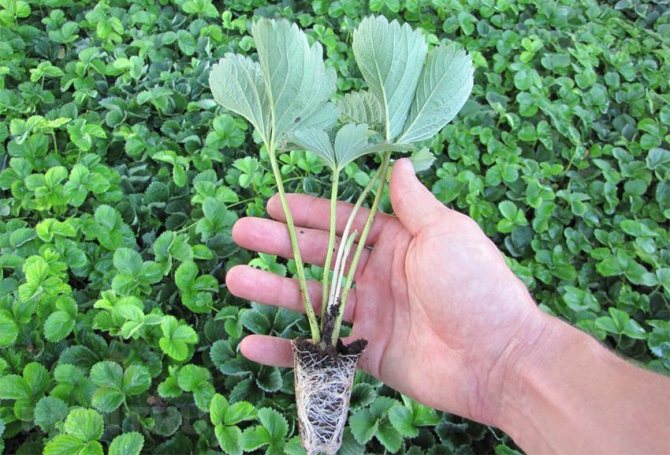

High-quality seedlings by the time of planting in a permanent place should have several leaves and a well-developed root system
Small-fruited remontant strawberries are grown mainly at home in pots, on a balcony or loggia, along paths or on a separate bed. A two-liter pot is enough for each bush. You can plant several plants in a long balcony box, then the distance between the plants should be 20-25 cm.
Large-fruited strawberries, as a rule, are grown for planting in open ground or a greenhouse, less often for growing in pots. Seedlings are planted in open ground only after a positive temperature has been established and frosts are no longer expected. Young plants are gradually accustomed to new conditions: they take the bushes out into the air for several hours, leaving them longer and longer every day.
Usually, the desired distance between the bushes is indicated on the back of the bag, because each variety has its own characteristics and some plants can be very large. Therefore, planting large-fruited strawberries can be at a distance of 20 cm to 50 cm between the bushes.
Ampel strawberries bear fruit not only on the outlet itself, but also on the mustache, so it looks very beautiful in hanging baskets, pots or on vertical beds.
Photo gallery: where you can transplant strawberries
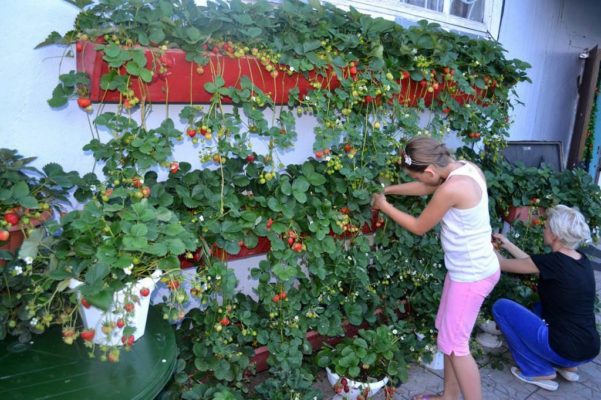

Ampel varieties can be planted in hanging boxes
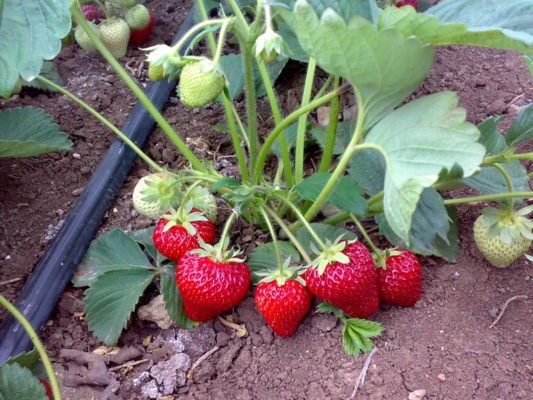

Large-fruited strawberries are most often planted in open ground.
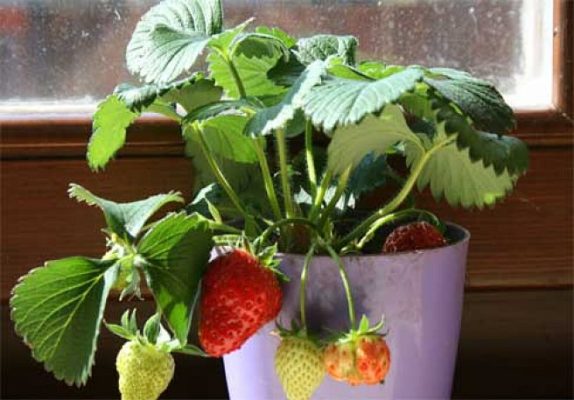

Two-liter pots are enough for small-fruited strawberries
Further care for strawberries grown from seeds is the same as for those obtained from rooted whiskers.
Variety selection
Strawberries grown in garden plots are perennial plants.
- Adult bushes are not large and reach about 25 cm in height.
- Large leaves have long petioles.
- The inflorescence consists of 5 petals.
- Despite the fact that the berries are small, they are very aromatic with a sweet and sour aftertaste.
Garden strawberries have an amazing ability: they are able to lower blood sugar. Strawberry juice helps in the treatment of gallstone disease. The berry contains a lot of various vitamins and minerals. It is especially rich in potassium, manganese, carotene, phosphorus, iron salts, citric and malic acid.
This culture has different ripening periods:
- Early;
- Average;
- Late.
As for the size of the berries, they can be divided into three types:
- Small-fruited strawberries. The weight of one berry is no more than 5 g. One of the most common varieties of this species is Alexandra.
- Medium size. Berries can have a mass of 5 to 15 g. Here, such varieties as Komsomolskaya Pravda, Zenit, Early Makheraukha, Vityaz and Zenit have proven themselves.
- Large-fruited. The mass of one berry can be 15g and more. This list includes popular varieties such as Gigantella and Maxim. This strawberry variety cannot be confused with others. With good watering, the berries grow quite large. Good yield can be noted among such varieties: Cinderella, Relay, Festivalnaya.
It is worth noting that the culture has a large number of remontant varieties that bear fruit several times over the summer. These include the following varieties:
- Ali Baba,
- Gross Fraser,
- Renaissance,
- Yellow miracle
- White Swan,
- Rügen,
- Pineapple,
- Regina,
- Alexandria,
- Baron Solimacher et al.
Before growing strawberry seedlings, you must definitely decide for what purpose it is needed. Repaired varieties will delight you with harvests throughout the season, however, their fruits are not so pleasant to the taste. Hybrid varieties produce large berries, but require frequent feeding with various minerals.
All types of strawberries have some differences, so the choice must be made depending on the purpose of its use. So, for conservation, usually, fruits with a more sour taste are chosen, and for fresh consumption - sweet ones. The mass of different varieties of this culture makes it possible to make a choice for every taste.
Experienced gardeners recommend purchasing the seeds of the most popular and well-known strawberry varieties.
Important! Seeds need to be bought before February, as later they may not be available for sale.
It is better for beginners to buy inexpensive seeds, while it is important to find out their expiration date.
Introduction
Just imagine, fragrant berries will ripen in your apartment all year round, with which you can pamper yourself on a frosty winter day, when a blizzard is spinning outside the window.
Read also: Strawberries are the queen of the garden: a description of the 22 best varieties, as well as reviews about them
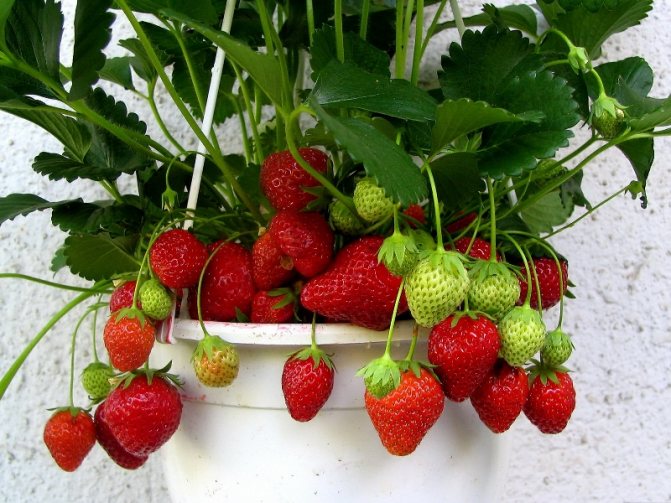

Repair beauty
back to menu ↑
See also: Blueberries: a description of the 25 best varieties from early to late ripening. Secrets of agricultural technology and useful properties of berries + Reviews


